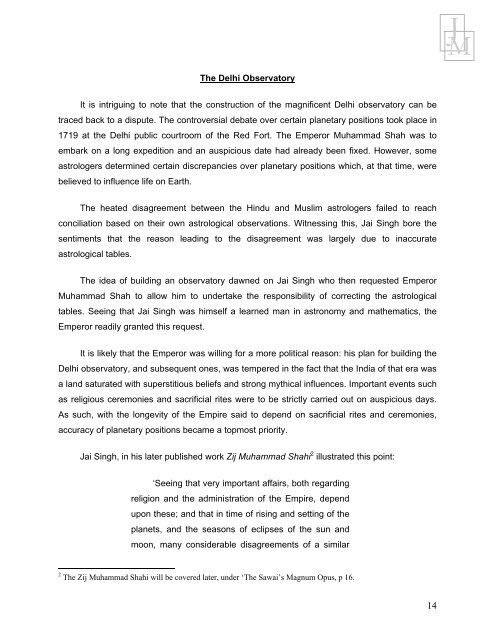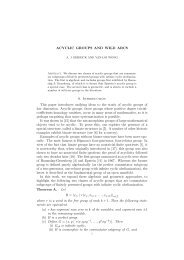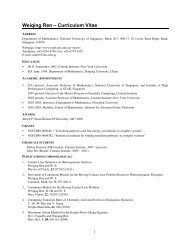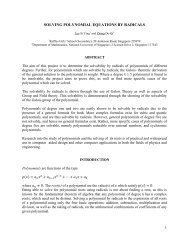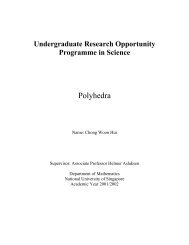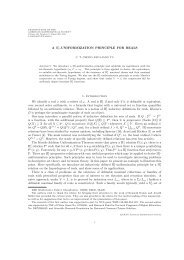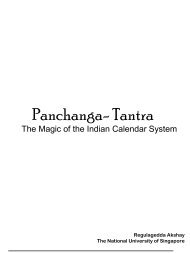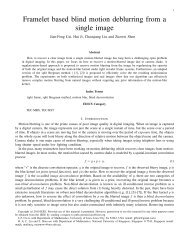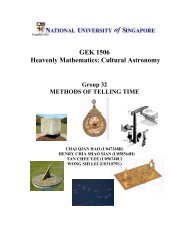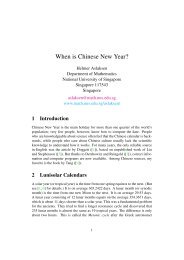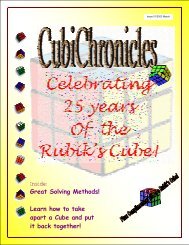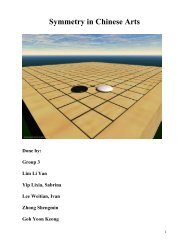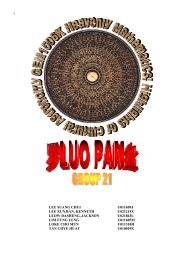Jantar Mantar: The Science of Indian Conjecture
Jantar Mantar: The Science of Indian Conjecture
Jantar Mantar: The Science of Indian Conjecture
You also want an ePaper? Increase the reach of your titles
YUMPU automatically turns print PDFs into web optimized ePapers that Google loves.
<strong>The</strong> Delhi Observatory<br />
It is intriguing to note that the construction <strong>of</strong> the magnificent Delhi observatory can be<br />
traced back to a dispute. <strong>The</strong> controversial debate over certain planetary positions took place in<br />
1719 at the Delhi public courtroom <strong>of</strong> the Red Fort. <strong>The</strong> Emperor Muhammad Shah was to<br />
embark on a long expedition and an auspicious date had already been fixed. However, some<br />
astrologers determined certain discrepancies over planetary positions which, at that time, were<br />
believed to influence life on Earth.<br />
<strong>The</strong> heated disagreement between the Hindu and Muslim astrologers failed to reach<br />
conciliation based on their own astrological observations. Witnessing this, Jai Singh bore the<br />
sentiments that the reason leading to the disagreement was largely due to inaccurate<br />
astrological tables.<br />
<strong>The</strong> idea <strong>of</strong> building an observatory dawned on Jai Singh who then requested Emperor<br />
Muhammad Shah to allow him to undertake the responsibility <strong>of</strong> correcting the astrological<br />
tables. Seeing that Jai Singh was himself a learned man in astronomy and mathematics, the<br />
Emperor readily granted this request.<br />
It is likely that the Emperor was willing for a more political reason: his plan for building the<br />
Delhi observatory, and subsequent ones, was tempered in the fact that the India <strong>of</strong> that era was<br />
a land saturated with superstitious beliefs and strong mythical influences. Important events such<br />
as religious ceremonies and sacrificial rites were to be strictly carried out on auspicious days.<br />
As such, with the longevity <strong>of</strong> the Empire said to depend on sacrificial rites and ceremonies,<br />
accuracy <strong>of</strong> planetary positions became a topmost priority.<br />
Jai Singh, in his later published work Zij Muhammad Shahi 2 illustrated this point:<br />
‘Seeing that very important affairs, both regarding<br />
religion and the administration <strong>of</strong> the Empire, depend<br />
upon these; and that in time <strong>of</strong> rising and setting <strong>of</strong> the<br />
planets, and the seasons <strong>of</strong> eclipses <strong>of</strong> the sun and<br />
moon, many considerable disagreements <strong>of</strong> a similar<br />
2 <strong>The</strong> Zij Muhammad Shahi will be covered later, under ‘<strong>The</strong> Sawai’s Magnum Opus, p 16.<br />
14<br />
J M


